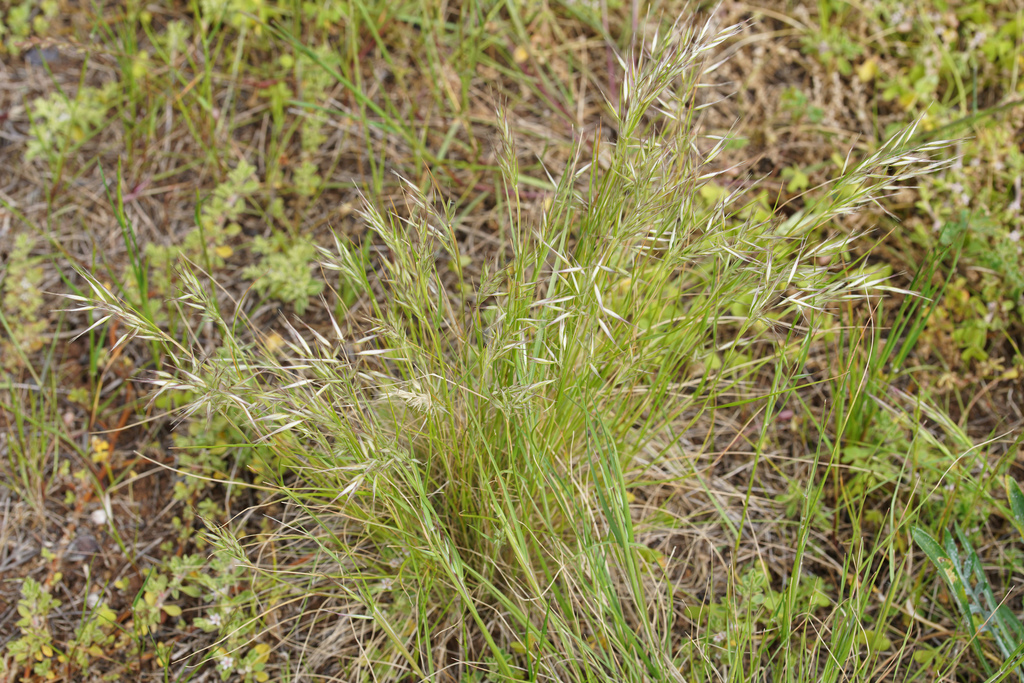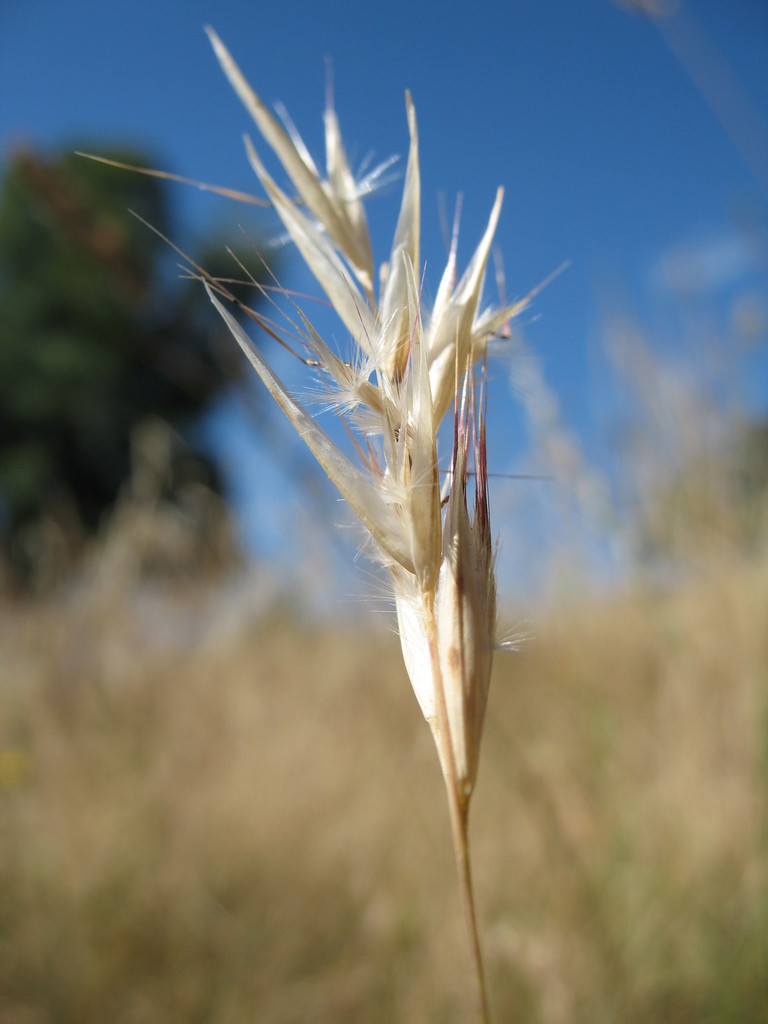Scientific Name: Rytidosperma caespitosum
Common Name: common wallabygrass
Family Classification (Clade): Monocots
Family: Poaceae
Form Description: Perennial grass forming clumps or tussocks.
Height (m): 0.2 – 0.9
Flowers: Spikelets 4-7-9 flowered, green or tinged purple, bracts exceeding florets except for exerted awns.
Fruit: Caryopsis
Municipality
Plant Communities
Habitat Notes
Widespread in open situations or light woodland in lowland areas and up to about 1000m. Drought tolerant.
Site Tolerance
Dry, Exposed, Moist
Soil Tolerance
Fertile, Loam, Nutrient-poor, Well-drained
Frost Tolerance
Hardy
General Notes
Rejuvenation occurs after burning, especially if followed by heavy rain. Wallaby-grass species are amongst the most valued native grasses in pastoral areas of Australia, due to their persistence, palatability and productivity. They produce high quality forage in winter and withstand seasonal grazing. Heavy grazing, however, prevents flowering and damages tussocks, allowing an increase of exotic annual species in the pasture. Light grazing in spring and summer (after seed production) is possible. Cannot compete with exotic pasture species and slowly dies out in these situations, responds well to increased soil fertility levels. It provides valuable green pick after summer rains. Bird attracting: attracts seed-eating birds. Tussocks provide habitat for native ground-dwelling reptiles. Has been known to spread well with occasional mowing.
Propagation Calendar
-
Flowering Month
Jan Feb Mar Apr May Jun Jul Aug Sep Oct Nov Dec -
Seed Collecting Month
Jan Feb Mar Apr May Jun Jul Aug Sep Oct Nov Dec -
Sowing Month
Jan Feb Mar Apr May Jun Jul Aug Sep Oct Nov Dec -
Cutting Month
Jan Feb Mar Apr May Jun Jul Aug Sep Oct Nov Dec
Propagation Method
Seed Information
Seed Collection
Seed heads turn from green to off-white and dry out as seed ripens. Should release from heads easily. Harvest by cutting stalks with secateurs. Rub heads between 2 rubber car mats to extract seed. Clean by sieving.
Seed Treatment Method
Surface Sow Sow seed finely on the surface of the potting mix and cover with just enough mix to hold the seed on the surface when watered.
Seed Storage Life
Long
Seed Treatment Notes
Some provenances, especially from inland areas may have 2-4 months dormancy. Seed is best sown on the surface of seed trays and covered lightly. Most species have best results between 15-25°C. Some Rytidosperma germinate quite quickly if sown as soon as ripe. Suitable for direct seeding.
Germination Time
2-3 weeks
Cutting & Division Information
Can be grown from transplants.

